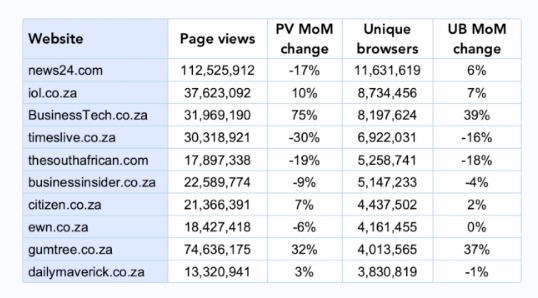News24 is soon to launch a ‘freemium’ paywall based on reader subscriptions.
In a column posted on the News24.com website on Monday morning, editor in chief Adriaan Basson said, “Like many of our peers internationally, we will be introducing a freemium paywall, which means most of our breaking news will remain free-to-read, but premium content will only be available to paying subscribers”.
While its Afrikaans equivalent, Netwerk24, has had a monthly reader subscription service in place since its launch in 2014, News24 has remained a free read since inception.
Basson told The Media Online the company was “mindful” that many readers might not be able to afford the subscription service while others could be resistant to paying for something they had received for free.
“This is why we spent so much time looking at international models, looking at what others are doing, and how we could continue to provide breaking news [for free], which is the hallmark of News24,” he said.
Basson said some people may not like the idea that they have to pay for certain articles, but he hoped they would “stick around” and give it a chance. “We’re not putting a red door between us and our readers. It’s going to be a different experience,” he said.
“I could almost call it the old News24 that people came to know and love,” he said, adding that the site has always been renowned for its breaking news coverage such as the death of Zinzi Mandela or the big storm in Cape Town.
“We are under no illusion that we can charge for that. What we are talking about is the extra stuff, the premium content, the in-depth stories, the investigative journalism, the follow-up stories, some of the podcasts… it will be aimed at people who want to read more, want the world explained and analysed. I believe we do have a loyal group of readers in that bracket who would be able to help us build a sustainable model,” he said.
The News24 demographic covers all South Africa’s diverse people, as its numbers testify. In May 2020, it had 11 631 619 unique browsers [Narratiive].

News24 publishes across three platforms: desktop, mobile and its app. “Almost 90% of our users access the site on mobile or by using the app,” Basson said.
At this point, he is reluctant to discuss the payment models, saying this information would be released at a later date.
Needless to say, they have looked at international best practice, including the well-known and much-discussed New York Times model but also investigated some titles in Poland where some newspapers have been transformed into sustainable digital publications.
“For me, the key thing I’ve learned is that you need reader revenue to become a sustainable, quality publication,” he said. “That’s the way traditional newspapers worked. A combination of advertising and reader revenue. So that’s nothing new.”
Early news platforms didn’t take reader revenue into account, resulting in years of ‘free’ reading and major loss of revenue for publishers. Overcoming this is a major challenge for media owners.
Future sustainability, Basson believes, will be based on subscription models incorporating reader and ad revenue, as well as membership models like that of the Daily Maverick.
As he wrote in his column, “Print media has all but reached the end of its glorious lifespan, but we cannot let quality journalism die with paper and ink. We need to build a sustainable model for quality, digital journalism.”














